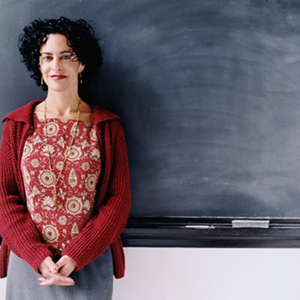 Recently, I heard a great story. A friend was recalling her first year as a teacher, many years ago. She'd learned all about cooperative learning in her preservice program, and she was eager to try it out in her inner-city elementary school. She assigned her students to teams and got off to a great start.
Recently, I heard a great story. A friend was recalling her first year as a teacher, many years ago. She'd learned all about cooperative learning in her preservice program, and she was eager to try it out in her inner-city elementary school. She assigned her students to teams and got off to a great start.
Very soon, however, my friend got a visit from her principal. He wanted to know what all that noise was coming from her class. He had a clear opinion that a quiet school was a good school, so he was very concerned.
My friend was well prepared. She explained about all the research on cooperative learning, pointed out that she was using cooperative learning with group goals and individual accountability, in accord with the latest research, and showed the principal how happy and productive the students were.
"It's fine if you want to use cooperative learning in your class," the principal said, "but you're going to have to get your students to stop talking to each other when they do it!"
My friend's story illustrates some of the difficulties inherent in expecting preservice programs to reform America's schools by turning out teachers trained in the very latest research-proven methods. The problem is that a new 22-year-old teacher is the least powerful person in the school. If he or she has any sense at all, the new teacher will do what the school is doing.
This does not mean that preservice programs need not expose aspiring teachers to proven methods. They should definitely do so, because as teachers grow and develop as professionals, they need a language and background in proven programs. My friend might not have been able to use cooperative learning in that school that year, but she did so later on. Knowing about it gave her a tool to improve her classroom that no principal could ever take away from her. But we need to be realistic about how much preservice can do to reform schools.
Change happens best in education when it takes place at the school level, so that many teachers can work together with a supportive administrator to implement ambitious reforms. Principals working in collaboration with whole staffs or departments can make major changes, bring in professional development and materials, and implement proven approaches. A supportive district and networks of liked-minded schools can also provide crucial strength to schools adopting, implementing, and progressively improving proven methods. When the school has adopted a given method with strong evidence of effectiveness, new teachers can learn to use it, and all children benefit. If the new teacher learned about the method or others like it during his or her preservice program, all the better, but counting on that experience to lead to change on a scale that matters is unlikely.
Preservice programs need to do their best to turn out capable, intentional, reflective teachers who have knowledge and skills that will be useful in any setting. Aspiring teachers need to learn about various approaches to teaching and to understand why they work and how they can be effectively applied. They should have opportunities to try out various methods in real classrooms, with feedback from mentors and peers. But don't count on this experience to gradually lead to reformed schools. For that, we need to reform the schools directly, as whole organizations, and then staff them with the best teachers we can find. As more schools use proven models, preservice programs will hopefully prepare their students to teach in schools using them.
Preservice Education and School Reform
Preservice Education and School Reform
This post was published on the now-closed HuffPost Contributor platform. Contributors control their own work and posted freely to our site. If you need to flag this entry as abusive, send us an email.
